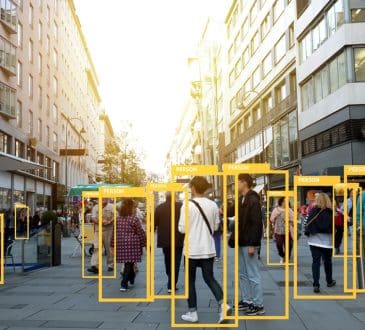Workers Want Employers to Uphold Their End of the Social Contract

What’s the glue that holds a business together? Without something effective, there’s just a sticky mess — engagement comes undone, quiet-quitting settles in and competitive edge falls away. What are the hidden factors that maintain focus, morale, and productivity?
Rapid workplace developments are loosening organizations at the seams, from hybrid working, to AI breakthroughs, evolving personal values, and unsettled geopolitics. To get the best from your people, you need something more than pay.
It’s easy to fall back on the “traditional way we do things.” But, like pay, this is controlled by the employer. What if employees regard the traditional way to be a fundamental part of the problem?
The hidden factors that glue a business together might be collectively referred to as a social contract. Like all contracts, it’s a relationship of give and take, specifically between employer and employee. The secret to getting the most from the workforce lies in adjusting the social contract.
Understanding the social contract
The social contract between employer and employee is an unwritten understanding that is both fluid and flexible. It begins with the fact that each side needs the other. Employers rely on commitment, loyalty, collaboration, initiative, and ambition. In return, employees can expect financial security, recognition, job fulfilment, development, and advancement.
Both sides benefit from balance. Employers are expected to allow work-life balance. Employees will likely step up on difficult days in the belief that on most other days they’ll be able to get home on time.
It wasn’t always like this. In the 1800s, when employees worked six days a week, often for 12 hours a day, and sometimes in brutal conditions, any sense of contract was negligible. Many employers prioritized profits, shareholders, exploitation, and Christian values. The profits came six days a week, the values just on Sundays.
Turns out that healthier ways of working are more productive. Leaders found that when they looked after employees — allowing shorter days, rest-breaks and five-day weeks — people performed better. Throughout the 20th century, a sense of responsibility developed on both sides of the contract.
The next phase for the social contract
By the 21st century, there was foosball in the lobby, free coffee, fruit bowls, and fitness sessions. To build loyalty, even devotion, businesses virtually presented themselves as a family. Managers were no longer called Mr or Mrs, and — like all families — everyone was reachable 24/7, thanks to smartphones. As workplaces became more informal, the social contract became more complex.
Work-life and home-life blurred, sometimes deliberately so. People were more likely to stay at work if work looked more like home. Leaders exploited this after the 2008 financial crisis. Employees were expected to work longer hours and do more for less — less money, fewer people, less personal autonomy. There was more tech, contributing to a way of working that was less human than was healthy.
Over the following 10 years, people began to feel that the social contract was tipping against them. Stress, loneliness, and fatigue were escalating. In 2019, the World Health Organization defined burnout for the first time.
The pandemic work-from-home protocols gave people a chance to reassess their job and measure it against their personal values. Millions voted with their feet, leading to the great resignation when 47.8 million US workers quit their job. Others stayed in place, but their heart was no longer in it. People began committing less. “Quiet-quitting” had arrived.
In particular, Generation Z began rewriting the book on engagement. The “me, now” generation expects employers to be socially aware, to quit “green-washing,” and to scrap spyware along with other corporate kabuki. They question a culture that determines who speaks in a meeting and who doesn’t. Gen Z demands authenticity. You can fire them — but they may live-stream you when you do.
Since the great resignation, employees have begun forcing the hand of employers. People are seeking to restore balance in the social contract, no matter what it takes.
How can leaders get back on the front foot? In the unsettled 2020s, employers can no longer guarantee a long-term career eventually leading to a corner office and a rubber plant. Nor can they rely on typical forms of wellbeing, such as fitness sessions or a sleep app.
So what can employers offer? A good place to start would be committing to the authentic workplace practices that people are seeking, such as:
- Identifying underlying causes of disengagement. What is giving rise to stress, fatigue, and burnout? It’s important to understand the kind of things that erode personal wellbeing and in turn undermine organizational resilience.
- Improving overall wellbeing. This means accepting more responsibility for the wellbeing of the workforce as a whole, not just the few eager individuals who sign up to a fitness class. This may involve a rethink of culture.
- Updating company culture. To thrive in the troubled 2020s it’s necessary to develop an updated culture based on trust, respect, belonging, and psychological safety (social wellbeing).
- Offering people personal development. Skills training shows employees that their employer is looking out for them, supporting not just their present role but their future career.
We are in a new era, where workplace expectations look very different to the way things were just a few years ago. Culture must follow suit if employers are to shape the agenda of a social contract in a way that makes their people feel proud, committed, and ready to engage.
Written by Nick Smallman.
Have you read?
The World’s Best Medical Schools.
The World’s Best Universities.
The World’s Best International High Schools.
The World’s Best Business Schools.
The World’s Best Fashion Schools.
The World’s Best Hospitality And Hotel Management Schools.
Bring the best of the CEOWORLD magazine's global journalism to audiences in the United States and around the world. - Add CEOWORLD magazine to your Google News feed.
Follow CEOWORLD magazine headlines on: Google News, LinkedIn, Twitter, and Facebook.
Copyright 2025 The CEOWORLD magazine. All rights reserved. This material (and any extract from it) must not be copied, redistributed or placed on any website, without CEOWORLD magazine' prior written consent. For media queries, please contact: info@ceoworld.biz








